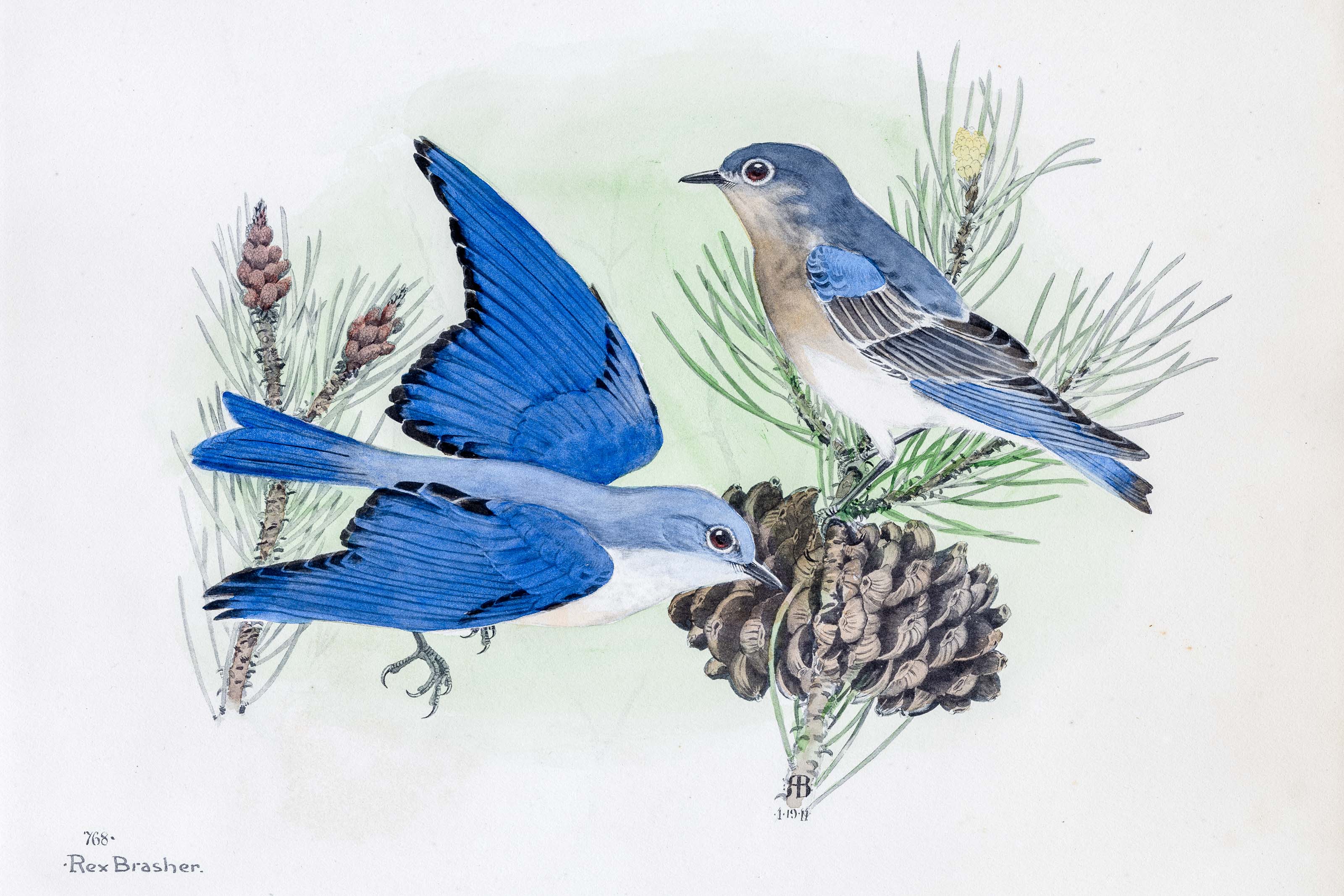




1911
1929
12
768
A team of dedicated board members, volunteers, and student interns has published every page in Volume 9. This volume includes 360 images of paintings and lyrical descriptions of birds, now available online for everyone to enjoy anywhere in the world. This is a monumental task. Each volume requires approximately 400 hours to photograph, edit, transcribe, catalog, and publish online. We need your support to complete this work.
If you're tech-savvy, have a good eye, are meticulous with details, and love structured data, please consider volunteering by emailing us at hello@rexbrasher.org.
We encourage all bird lovers and supporters to consider a monetary donation to support our mission to make Rex's work available for everyone. You can provide a one-time or recurring donation online.
Altho most delicately colored these birds are the hardiest of the western BLUEBIRDS, frequently wandering up to timberline and sometimes above to an altitude of 13,000 feet. My friend George Gladden was greeted by a little family of them near the summit of San Antonio Peak (Old Baldy) in southern California, at an altitude of 10,000 feet, far above the clouds thru which dense billows the higher surrounding peaks loomed like islands in a motionless sea. While the unearthly quiet and indescribable weirdness of the scene deeply impressed him, it had no apparent effect upon the Bluebirds whose warblings were as sweetly plaintive on the heights as notes of their eastern brothers in a Connecticut valley orchard.
They haunt the open mountain meadows and to see a flock of these "sky fragments" fluttering over a field of lupines is to etch on memory a lifetime picture.
NEST built almost entirely of dried grass, sometimes lined with a few feathers and bark strips; located in hollow limb, barns, outbuildings, under eaves or even in abandoned mine shafts.
EGGS, 4 to 7, plain greenish blue.
Mountains of western North America. North to Mackenzie and Yukon. Breeds in Canadian and locally in upper Transition zones south to higher mountains of New Mexico and Arizona. Eastward to eastern Wyoming (Black Hills) and northwestern Texas, westward to Sierra Nevada and Cascade ranges. Winters from southern California, Kansas, Oklahoma and Texas, southward.